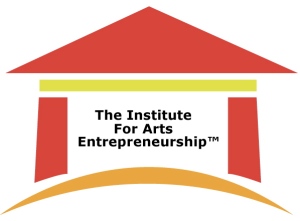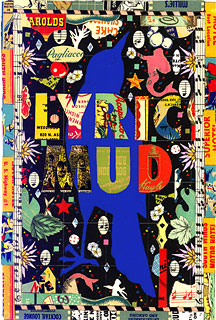First, a big thanks to fellow ETA blogger David Cutler for featuring Fifth House Ensemble in his new book, the Savvy Musician, advance copies of which are available on his website prior to the full release in November. If you’ve been reading his posts, you know that David brings an incredible energy to the concept of being a working, entrepreneurial musician, and his book is sure to be a great resource all of us who are working to create new opportunities in the field.
In an article published in the Pittsburgh Post-Gazette, David’s mention of 5HE’s dual business model was mentioned. When we formed in 2005, we created both a 501(c)3 nonprofit (Fifth House Ensemble) and an LLC for our private events business (Amarante Ensembles, LLC). Same folks, different purpose.
As a young group, we knew we wanted to provide a wide variety of services, including those that would serve the public good (performances, educational programs), as well as those that would help to keep us fed (weddings, private events). We formed both businesses at the same time in order to be able to keep these activities separate financially, and in order to be able to market them in completely different ways.
Since the article was published, I’ve been getting many inquiries from arts organizations both established and emerging about how and why we did this, wondering if the same model would work for them. Interestingly, in most cases the concern is less about the types of services being provided and the best business structure to manage them, and more about how to raise the most money in the shortest amount of time. Inevitably, those who began as a for-profit think that they will raise more from donated funds as a non-profit, and vice-versa.
My first question is always, “why do you want to do this?” A business structure is about the most effective way to manage the types of services you want to offer, so you have to consider what is a good fit for your goals, not just your bank statement.
If you are a performing arts organization that is committed to work in the public schools and bringing performances to underserved audiences, changing from not-for-profit to an LLC will not help you raise funds from venture capitalists, unless something changes about the services you offer. What will you tell them about their return on investment? And do the people you are serving have the resources to pay big bucks for what you do?
Conversely, if you are a for-profit company that has been successful selling tickets to shows, merchandise, and DVDs, and you are attracted to the extra money you think you will bring in as a non-profit but loathe paperwork, is switching to 501(c)3 status really a good fit? Given that you don’t want to be the one to do grantwriting, annual reporting, financial management worthy of public scrutiny, board agendas, and all of the other tasks that go into managing a nonprofit, you may end up paying staff a large part of the added revenue you would see from changing structures.
The only real reason to have a split structure (in my opinion) is if you have services that are distinctly different enough to warrant that. If there is overlap, not only is the purpose for your choice not clear, but you also risk running afoul of the IRS. I remember fondly the conversation I had with Mr. Botkins, the IRS agent who reviewed our 501(c)3 application, about how we had created these two entities for the sole PURPOSE of keeping for- and non-profit activities separate. The IRS doesn’t like seeing for- and non-profit organizations to be connected in any way, via common control (similar officers/managers), contracts, or other financial arrangements.
Know yourself, the type of work you want to do, your tolerance for paperwork, and the types of people you want to serve. Be realistic about how much you have the potential to earn or raise. If the structure you are considering isn’t a good fit for your services, don’t be tempted to follow what you perceive to be the greener pasture, or you may certainly find yourself out in the cold. The best way to get more green is to make sure that what you do is serving the people around you in the best possible way, which will inspire customers to pay for your work, or donors to support its creation.
Melissa is the flutist and Executive Director of the Chicago-based Fifth House Ensemble. Like what you read here? For more music entrepreneurship tidbits, visit www.playingclosetothebridge.wordpress.com, brought to you by members of 5HE.




 Although we all know that the arts are often thought to be closer to the rim of education than to its core, they are, surprisingly, “critically important means for developing complex and subtle aspects of the mind”, argues Elliot Eisner.
Although we all know that the arts are often thought to be closer to the rim of education than to its core, they are, surprisingly, “critically important means for developing complex and subtle aspects of the mind”, argues Elliot Eisner.  Anyway, Jason wrote a book that was release last September, called 10-Minute Toughness: The Mental Training Program for Winning Before the Game Begins (McGraw-Hill).
Anyway, Jason wrote a book that was release last September, called 10-Minute Toughness: The Mental Training Program for Winning Before the Game Begins (McGraw-Hill). One of the reasons I want to write books is because books, art, poetry and film, as examples, all intrinsically are built to last. Their very form offers easy “spark-creating-experience” access, like a hand full of nourishment going right into our mouth. Love that rush of energy that follows, don’t you? You know, the part before you get tired?
One of the reasons I want to write books is because books, art, poetry and film, as examples, all intrinsically are built to last. Their very form offers easy “spark-creating-experience” access, like a hand full of nourishment going right into our mouth. Love that rush of energy that follows, don’t you? You know, the part before you get tired? 

















